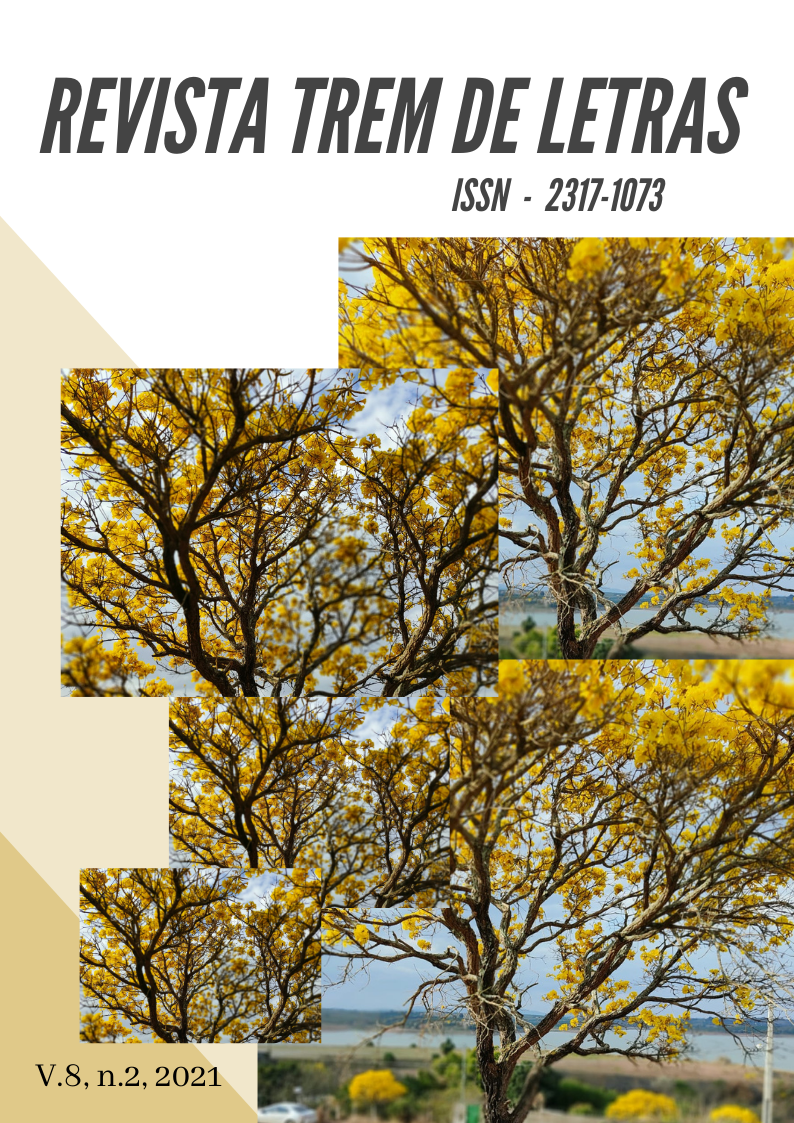Multimodal discursive genres: multiliteracy in reading practices
Keywords:
Multiliteracies. Reading. Reader practice. Speech genre. Multimodality.Abstract
The main purpose of reading practices is to enable subjects to understand, interpret and produce texts from discursive genres constituted in society. Communication is carried out through different discursive genres. Many of these genres are multimodal, marked by the mix of different languages, verbal and non-verbal, and by different cultural manifestations that interact in cyberspace and narrow the distances between enunciators and utterances. In view of the need to study discursive genres that support multiple languages and multiple media. The general objective is to understand the reading skills necessary to understand the meanings projected in texts of multimodal discursive genres in the reading practices for the multi-courses; particularly, in this article, the infographic. This research is based on the contributions of Bakhtin (1997) and Volochínov (2009) about verbal interaction, discourse genres and dialogism; in Lemke's studies (2010) on multimedia literacy; in the concepts of Rojo (2012) referring to multi-elements, in addition to other references complementary to the theme. The study involves exploratory, bibliographic and documentary research, in order to consult materials already published with a qualitative approach to the analysis of the corpus - an infographic published in the magazine Superinteressante. The analysis of the materiality of an infographic in the reading practices encompasses the constituent elements for the understanding and production of multimodal genres, and promotes multiliteracies.
References
BAKHTIN, M. Os gêneros do discurso. In: ______. BAKHTIN, M. Estética da criação verbal. 2. ed. São Paulo: Martins Fontes, 1997, p. 277-326.
BAKHTIN, M.; VOLOCHINOV, V. N. Marxismo e filosofia da linguagem: problemas fundamentais do método sociológico na ciência da linguagem. 13. ed. São Paulo: Hucitec, 2009.
BRASIL. Parâmetros Curriculares Nacionais: Ensino Médio: Linguagens, códigos e suas tecnologias. Brasília: MEC/SEMTEC, 2000. Disponível em: <http://portal.mec.gov.br/seb/arquivos/pdf/14_24.pdf>. Acesso em: 28 dez. 2021.
CHARTIER, R. Do códice ao monitor: a trajetória do livro. Estudos Avançados, IEA/USP, v. 8, n. 21, p. 185-199, 1994.
COPE, B.; KALANTZIS, M. Designs for social futures. In: ______. Multiliteracies: Literacy learning and the design of social futures. Londres: Routdledge, 2000b. p. 201-232.
COPE, B.; KALANTZIS, M. Multiliteracies: New Literacies, New Learning. In: ______ COPE, B.; KALANTZIS, M. Pedagogies: An International Journal, 2009, p.164-195. Disponível em: <http://newlearningonline.com/files/2009/03/m-litspaper13apr08.pdf>. Acesso em: 28 dez. 2021.
FIORIN, J. L. Introdução ao pensamento de Bakhtin. São Paulo: Ática, 2011.
KRESS, G; VAN LEEUWEN, T. The modes and media of contemporary communication. Londres: Hodder Education, 2001.
LEMKE, J. L. Letramento metamidiático: transformando significados e mídias. Trab. Ling. Aplic., Campinas, v. 49, n. 2, p. 455-479, jul./dez. 2010.
PETIT, M. Os jovens e a leitura: uma nova perspectiva. 2. ed. São Paulo: Editora 34, 2009.
ROJO, R. Pedagogia dos multiletramentos: diversidade cultural e de linguagens na escola. In: ROJO, Roxane; MOURA, Eduardo (Org.). Multiletramentos na escola. São Paulo: Parábola, 2012. p. 11-31.
SANTAELLA, L. Navegar no ciberespaço: o perfil cognitivo do leitor imersivo. 2. ed. São Paulo: Paulus, 2007.
SUPERINTERESSANTE. O melhor do ano: 10 melhores infográficos da SUPER em 2012. São Paulo: Abril, 2012. Disponível em: . Acesso em: 28 dez. 2021.
THE NEW LONDON GROUP. A pedagogy of multiltiliteracies: designing social futures. In: COPE, Bill; KALANTZIS, Mary. Multiliteracies: Literacy learning and the design of social futures. Londres: Routdledge, 2000. p. 9-36.
Downloads
Published
How to Cite
Issue
Section
License
1. Proposta de Política para Periódicos de Acesso Livre
Autores que publicam nesta revista concordam com os seguintes termos:
- Autores mantém os direitos autorais e concedem à revista o direito de primeira publicação, com o trabalho simultaneamente licenciado sob a Licença Creative Commons Attribution que permite o compartilhamento do trabalho com reconhecimento da autoria e publicação inicial nesta revista.
- Autores têm autorização para assumir contratos adicionais separadamente, para distribuição não-exclusiva da versão do trabalho publicada nesta revista (ex.: publicar em repositório institucional ou como capítulo de livro), com reconhecimento de autoria e publicação inicial nesta revista.
- Autores têm permissão e são estimulados a publicar e distribuir seu trabalho online (ex.: em repositórios institucionais ou na sua página pessoal) após o processo editorial, no todo ou em partes, já que isso pode gerar alterações produtivas, bem como aumentar o impacto e a citação do trabalho publicado.


